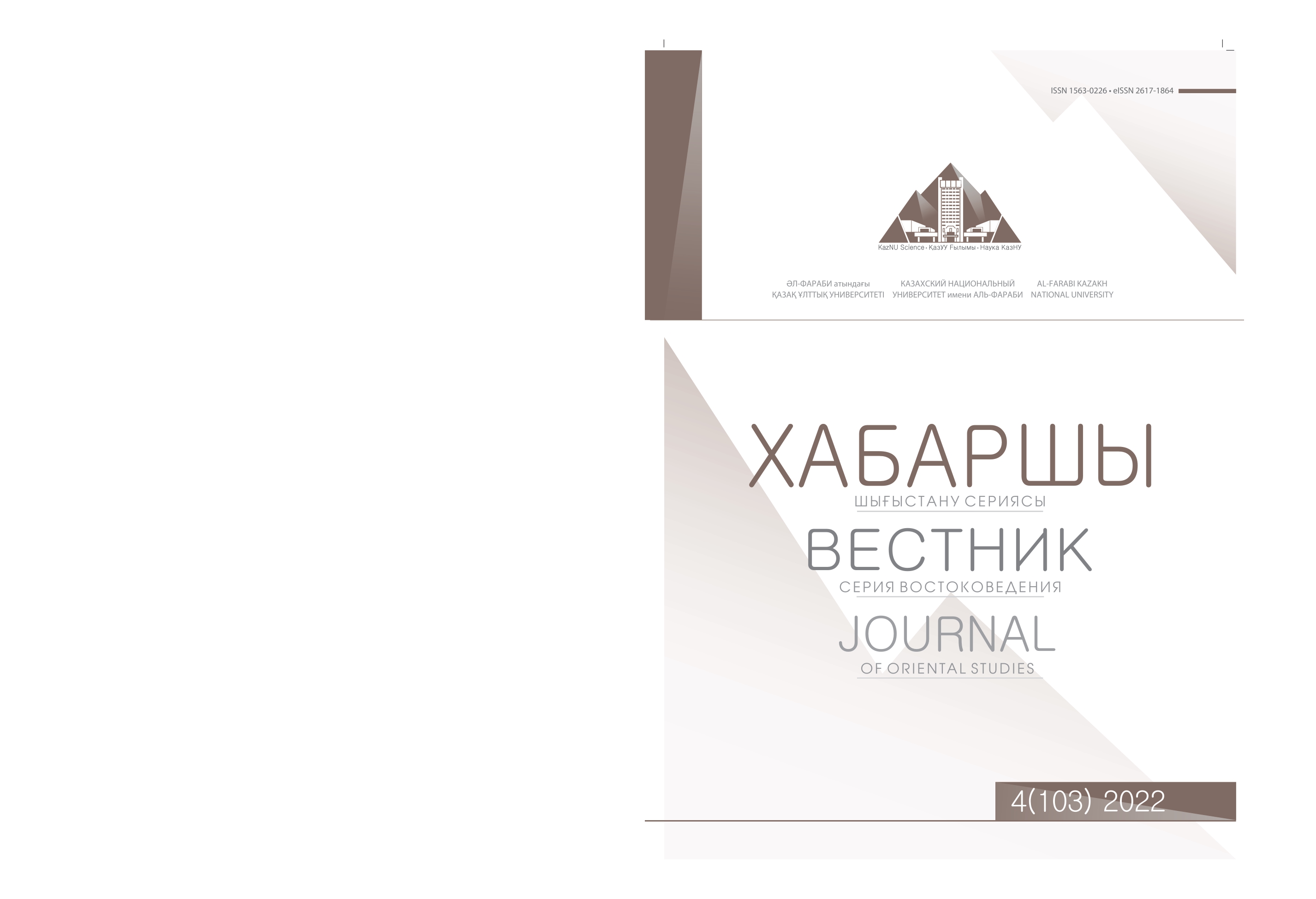Military linguistic and cultural components in the national clothes of the kazakh and turkish peoples
DOI:
https://doi.org/10.26577/JOS.2022.v103.i4.08Abstract
The paper investigates the military linguoculturological components that comprise the discourse of Kazakh and Turkish ethnic groups' national costumes. National clothing serves as a non-verbal discourse and a source of information and data in a communicative aspect, in addition to highlighting the distinctiveness of each ethnic community. It is well known that the Kazakhs and Turks' military language and cultural traits are connected to equestrian life. There are numerous similarities between Kazakh and Turkish culture since they both acquired the practice of horseback riding from the ancient Turks. This includes national clothes. Since practically all riders were potential fighters, the nomadic Kazakhs had no sense of an organized military. Traditional national clothing was dominated by military linguistic and cultural elements. This is evident from the fact that these clothes are so convenient for military situations that other peoples who came into contact with them used them in their professional armies. However, the Kazakhs retained their nomadic lifestyle, while the Turks switched to settled life, created a professional army based on the Ottoman Empire, and created a military uniform. From a linguocultural perspective, shalbar, kaptama, shekpen, and kebenek, the elements of both ethnic groups' national clothing, may be used to assess the effect of these aspects. By examining the military-linguocultural elements that influence the discourse of the national costumes of the Kazakh and Turkish peoples, the study aims to determine the change in the national costume of the settled Turkish ethnic group.




